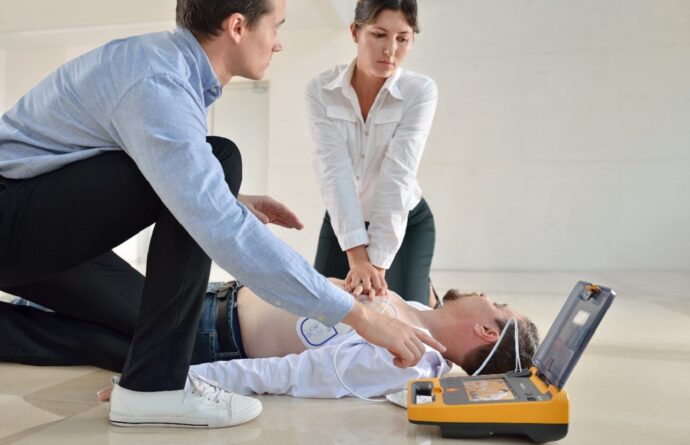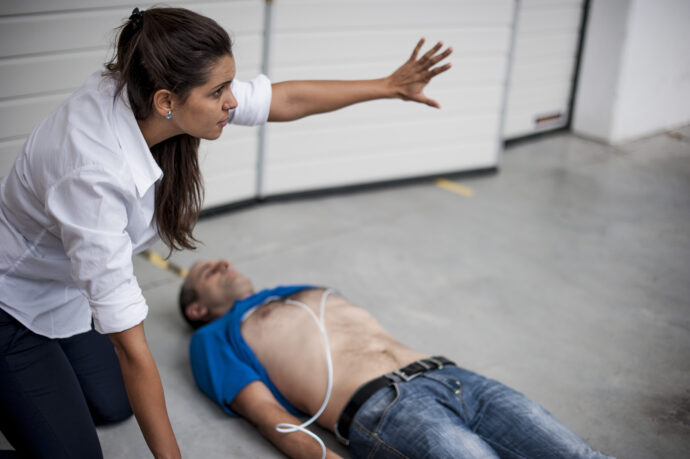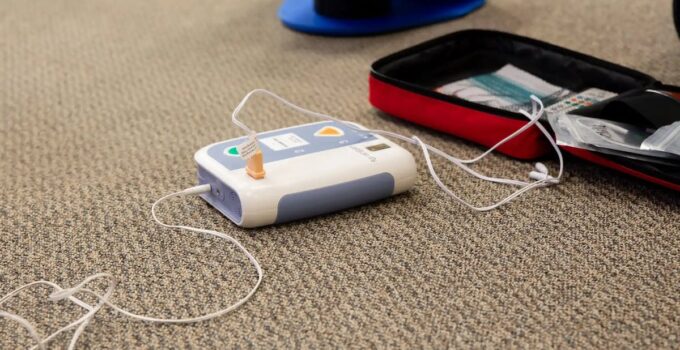Sometimes the difference between life and death can be just a few minutes, and in those moments, knowing how to react can save someone’s life. Unfortunately, the majority of us have no idea what to do and how to help others, so if you want to change that about you, you’ve come to the right place.
In this article, we are going to tell you more about the AED machine, and we will give you some information on how to use an automated external defibrillator.
Keep on reading to find out what this device is, how it is used, and how you can ensure you are ready to aid when people need you the most.
What is it and why is this tool important?
At its core, this unit is a compact, battery-powered device tailored to treat life-threatening cardiac arrhythmias. The brilliance of the defib lies in its intuitive design, which empowers even those without medical backgrounds to step in during emergencies.
When deployed, the device analyzes the heart’s rhythm, determining whether a shock is needed. If a shockable rhythm like ventricular fibrillation is detected, the cardioverter will prompt the user to deliver a shock, aiming to restore the heart’s natural rhythm and potentially save a life.
What can you do to ensure that you are ready to use it?

Source: mindray.com
While the simplicity of cardioverters is one of its greatest strengths, gaining formal training and certification can greatly enhance one’s ability to act decisively in emergencies.
By undergoing training, individuals gain a comprehensive understanding of the heart restart machine’s mechanics, nuances in its usage, and the critical role of CPR in tandem with defibrillation.
Being certified not only imparts confidence in potential AED users but also assures those around them that they’re equipped with the expertise to handle cardiac emergencies.
The fusion of theoretical knowledge with hands-on practice ensures that individuals are primed to make the most of the critical minutes following a cardiac event.
So, if you want to ensure you are ready and capable of using this life-saving device, you should visit https://cprcertificationnow.com/products/cpr-first-aid-bloodborne-pathogens-certification.
How do you know that you need to use this tool?
While the cardioverter is a marvel of medical technology, discerning when it’s warranted is a crucial aspect of its effective utilization. Typically, heart restart machines come into play when someone exhibits signs of sudden cardiac arrest – unconsciousness, absent or irregular breathing, and no discernible pulse.
With each passing minute without defibrillation, the chances of survival diminish drastically.
This urgency underlines the importance of swift action. Moreover, modern defibs are designed with the user in mind, incorporating voice-guided instructions that shepherd users through the resuscitation process, mitigating any uncertainty.
What are the protocols that you need to be aware of?
In the throes of a medical emergency, prioritizing safety is paramount. Before deploying a cardioverter, it’s essential to ensure the afflicted individual is on a dry, safe surface, minimizing any risk of electrical injury.
While heart restart machines come equipped with sensors to analyze heart rhythms, users must be vigilant, ensuring no one is in contact with the patient when a shock is administered.
This diligence ensures that the electric current is directed precisely where it’s needed, maximizing its efficacy.
Ensure scene safety before you use the device

Source: innosonian.global
Before diving into using the AED, it’s vital to ensure the safety of the environment. Ensure the person is lying on a dry surface and away from water puddles, especially if outdoors.
This precaution is crucial since water is a conductor of electricity and can pose risks during the defibrillation process. If the person is wet, quickly dry them before attaching the cardioverter pads. Also, if they have a medication patch on their chest, it’s advisable to remove it and wipe the area clean to avoid interference.
Knowing where to place the pads is a must
While heart restart machines come with guiding illustrations on proper pad placement, it’s essential to be thorough. Place one pad on the right upper chest, just below the collarbone, and the other pad goes to the left side, just below the armpit.
Make sure the skin is free from excessive hair, sweat, or dirt. The electrical current follows the path between the two pads, so their correct placement is paramount in ensuring the electric shock effectively reaches the heart.
How do you ensure you are ready at all times?
Though they might sit unused for extended periods, the readiness of AEDs is non-negotiable. Many modern cardioverters possess self-diagnostic features, but proactive manual checks are indispensable.
Regular inspections should encompass assessing battery levels, verifying the integrity and expiry date of the pads, and ensuring the device’s software is updated. These routine checks, while seemingly mundane, bolster the reliability of defibs, ensuring they function flawlessly when called upon.
How to ensure others know what to do?

Source: defibsplus.com.au
Public education around AEDs is as crucial as the device itself. While many public places like shopping centers, educational institutions, and airports now house cardioverters, public awareness of their locations remains an area of improvement.
Grassroots initiatives, awareness campaigns, and workshops can play pivotal roles in familiarizing communities with heart restart machine locations and usage techniques. A community well-versed in defib deployment is inherently more resilient and equipped to transform dire situations.
You need to be ready for all the potential emotions after using this device
For bystanders thrust into emergency scenarios, wielding a defib can be a transformative experience. Many who have utilized this device in critical moments recount the surge of adrenaline, coupled with an acute sense of responsibility.
Yet, post the event, these same individuals often grapple with a mélange of emotions – from pride at having made a tangible difference to anxiety stemming from the gravity of the situation.
It’s pivotal for communities to recognize this emotional aftermath and offer resources – be it counseling or peer support groups – to help these unsung heroes process their experiences.
Conclusion

Source: safeandsound.uk.net
The Automated External Defibrillator, a beacon of hope in dire situations, stands as a testament to what’s achievable when innovation meets intent.
By understanding its mechanisms, ensuring regular maintenance, and promoting widespread awareness, we create safer, more resilient communities.
As the saying goes, “Preparation is the key to success.” In the context of cardioverters, this preparation can, quite literally, save lives.




